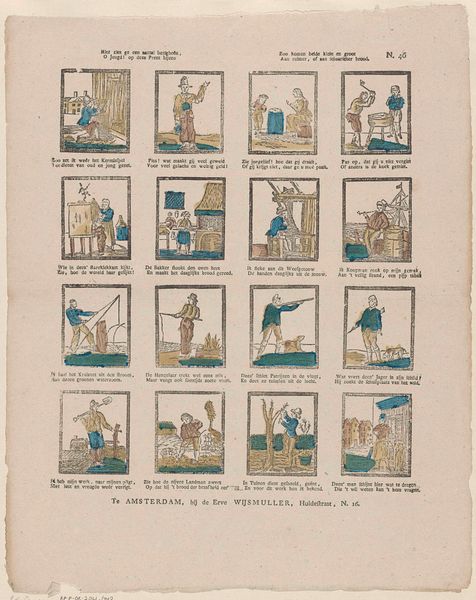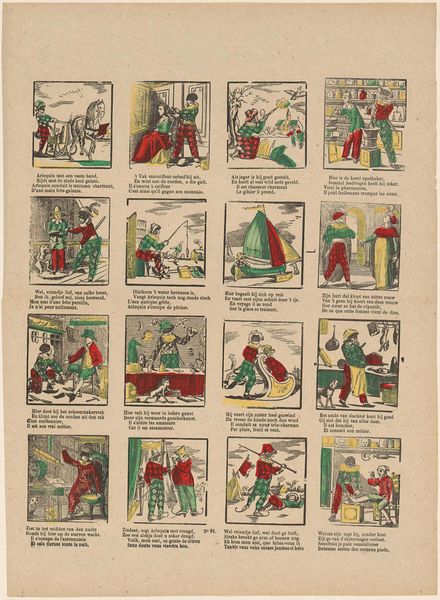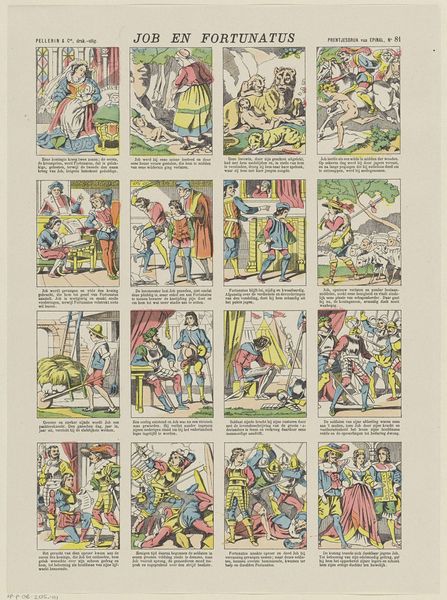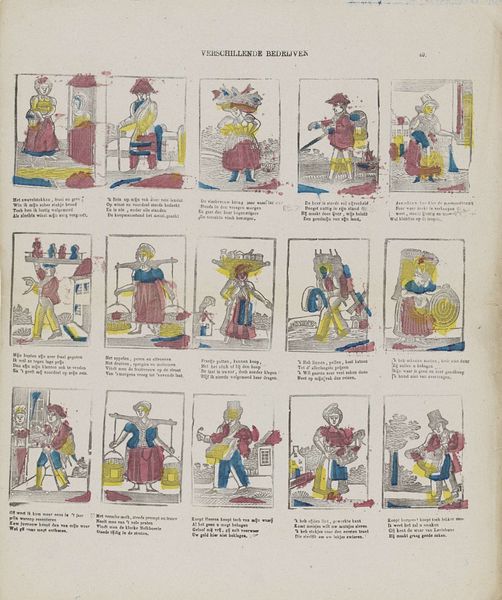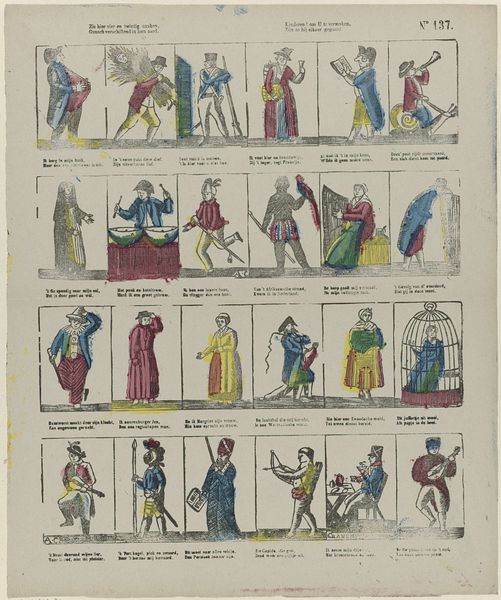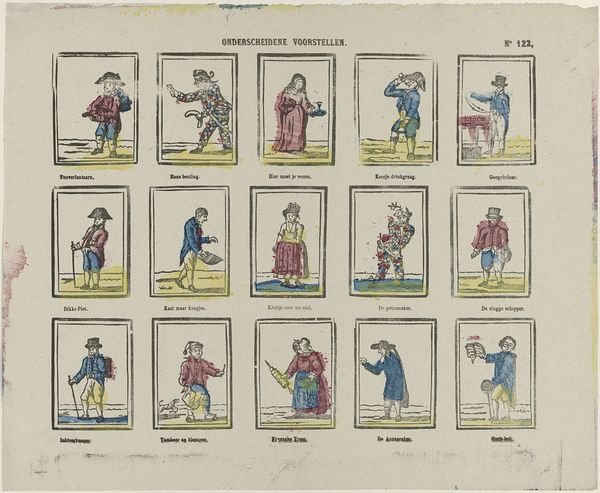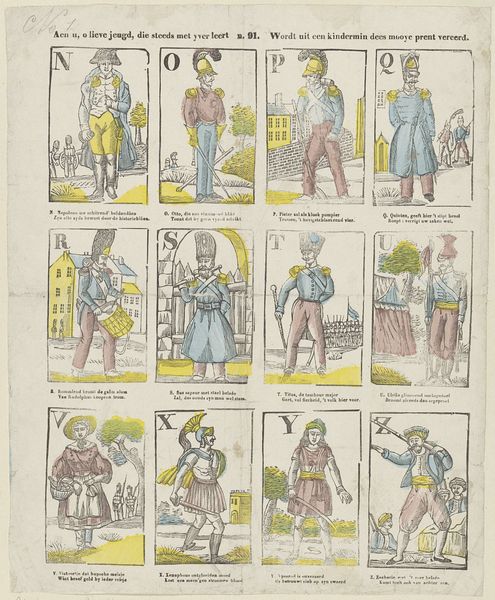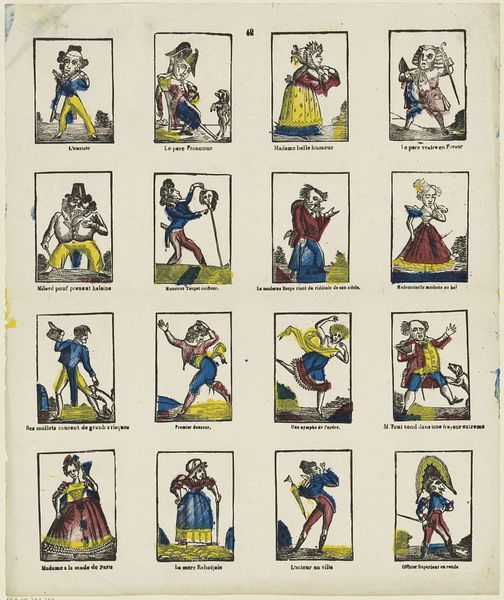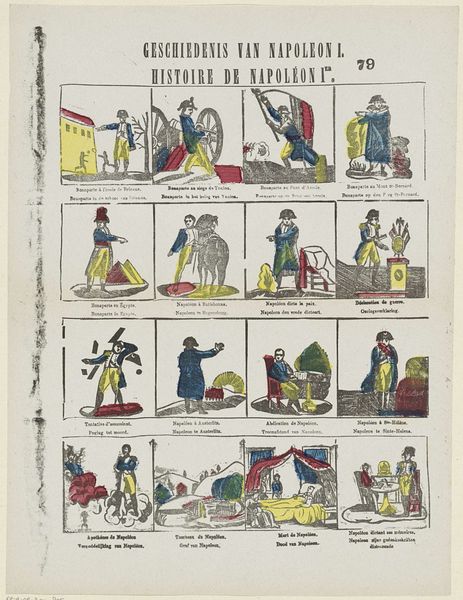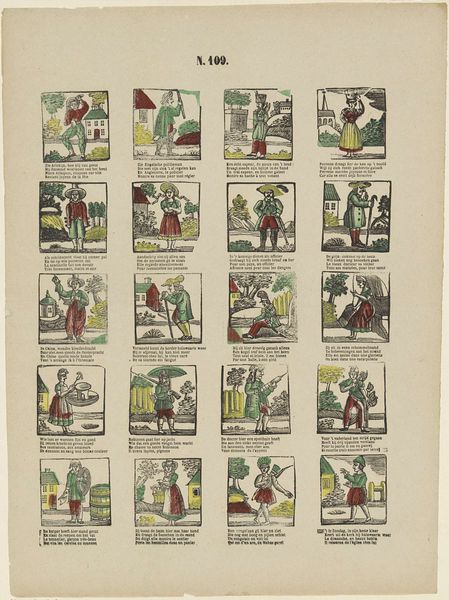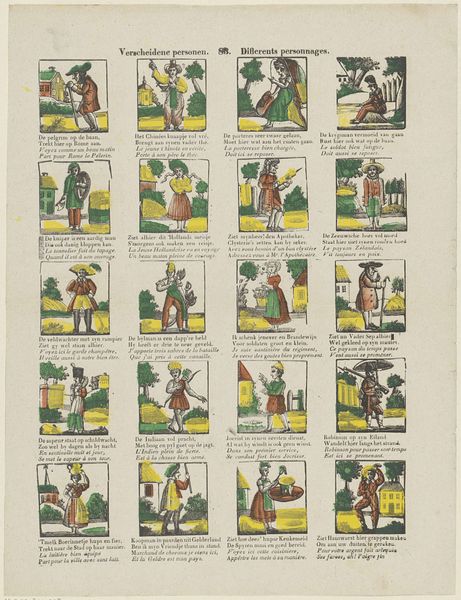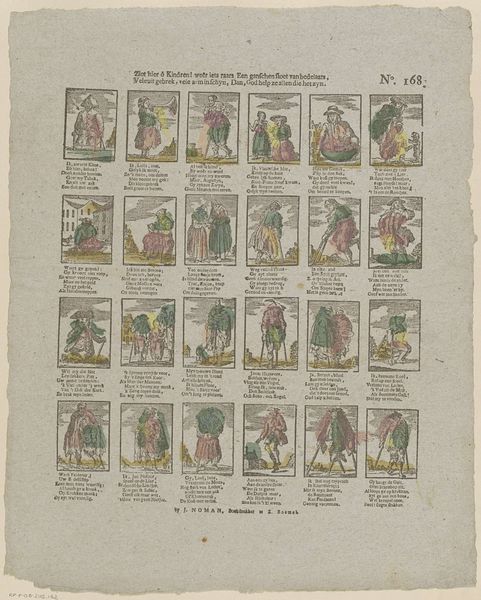
Mythologische figuren, de dagen van de week en verschillende volksstammen 1806 - 1854
0:00
0:00
print, etching
#
narrative-art
# print
#
etching
#
watercolour illustration
#
history-painting
Dimensions: height 338 mm, width 427 mm
Copyright: Rijks Museum: Open Domain
Curator: What a curious assemblage of figures. My initial read is one of distinct compartments, not unlike an allegorical game board. Editor: Indeed. Here we have "Mythologische figuren, de dagen van de week en verschillende volksstammen," which translates to mythological figures, the days of the week, and various tribes. It’s an etching that likely dates between 1806 and 1854. The print resides in the collection of the Rijksmuseum. Curator: Etching provides a relatively graphic rendering here. Note the confident cross-hatching of linear textures within each compartmental illustration. The organization into a series of registers encourages lateral viewing, rather than privileging a traditional focal point within a picture plane. Editor: The categorization displayed here gives me the sense of social categorization—how cultures once assigned significance to time and constructed hierarchies through myth and ethnicity. Curator: Note, in particular, how certain figures repeat gestures: outheld sword, orb. The echo of formal devices provides not only compositional integrity but thematic consonance. Editor: But consonance to what end? The image seems like an attempt to taxonomize through visual association, a political project reflected in its organization into neat, gridded categories. It is fascinating to view how someone saw and sorted the world two centuries ago, what linked the mythic and mundane in an understandable, and printable, form. Curator: A cultural snapshot viewed through the structure of lines and forms, then. An arrangement of visual strategies which help me further reflect on the structure behind meaning itself. Editor: Exactly, and how images can structure our thinking and ways of life. A worthwhile object for viewing across both time and the grid of cultures.
Comments
No comments
Be the first to comment and join the conversation on the ultimate creative platform.
